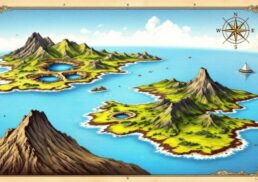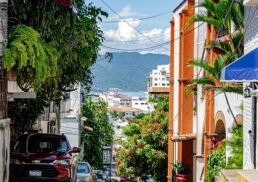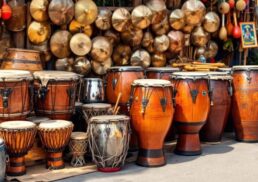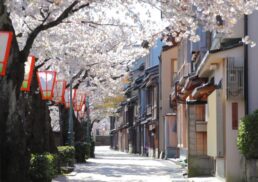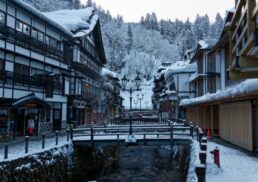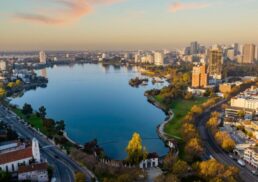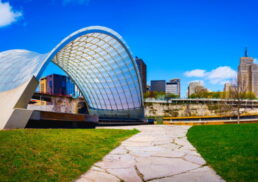Tohoku, located in the northern part of Japan’s main island, consists of six prefectures: Aomori, Akita, Iwate, Yamagata, Miyagi, and Fukushima. Known for its diverse landscapes, rich cultural heritage, and distinctive experiences, Tohoku is a treasure trove for travelers. This guide will explore its natural beauty, historical sites, vibrant festivals, culinary delights, and more. Discover why Tohoku is a must-visit destination.
Table of Contents
Key Takeaways
The Tohoku region of Japan, consisting of six rural prefectures, offers diverse experiences ranging from natural beauty and hot springs to cultural heritage sites and urban attractions.
Major natural attractions in Tohoku include Lake Towada, Oirase Gorge, and Mount Zao, all known for their breathtaking landscapes and outdoor activities.
Tohoku’s cultural richness is showcased through its festivals, traditional temples and shrines, samurai towns, and unique culinary experiences such as the Wanko Soba challenge and sake tasting.
Exploring the Prefectures of Tohoku
The Tohoku region, comprising six diverse rural prefectures, offers unique experiences that cater to various interests and preferences. These prefectures are:
Aomori
Akita
Iwate
Yamagata
Miyagi
Fukushima
The region is a captivating blend of natural beauty, cultural and world heritage, and modern attractions, including national parks.
Frequently referred to as Japan’s ‘Apple Kingdom’, Aomori is famous for contributing to over 60% of the country’s annual apple production. Visitors can enjoy:
Panoramic views from the Aomori Bay Bridge and the Aspam building
Indulging in a DIY seafood bowl experience at the Aomori Gyosai Center
Exploring the lush countryside and natural attractions, such as hot springs and lakes
All of these add to the charm of Aomori.
Renowned for its captivating natural landscapes, Akita Prefecture houses Lake Towada and the Oirase Stream, each boasting stunning views and a plethora of outdoor activities.
With an abundance of historical sites, hot springs, and natural beauty, Iwate Prefecture exhibits an ideal blend of cultural heritage and adventure. Whether you’re exploring Towada-Hachimantai National Park or engaging in winter sports, Iwate promises an enriching experience.
As Tohoku’s most urbanized region in northern Japan, Miyagi Prefecture draws in visitors with its lively city ambiance and rich cultural heritage on Japan’s largest island. The major cities, including Sendai, known as the ‘City of Trees,’ offer a mix of modernity and tradition. Don’t miss a visit to Matsushima Bay, famous for its scenic beauty and regarded as one of Japan’s three most beautiful views.
Boasting an array of natural and cultural attractions, Yamagata Prefecture, and its capital Yamagata City, are true jewels of the region. From the snow-covered peaks of Mount Zao to the hot springs of Ginzan Onsen, Yamagata is a haven for nature enthusiasts and those seeking relaxation.
Finally, the resilient Fukushima Prefecture presents a mix of historical landmarks, natural allure, and a comforting, hospitable atmosphere. Exploring these prefectures provides a glimpse into the diverse offerings of Tohoku. Each visit unveils a new facet of Japan’s rich tapestry of culture, history, and natural wonders, making Tohoku an essential destination for any traveler.
Top Natural Attractions in Tohoku
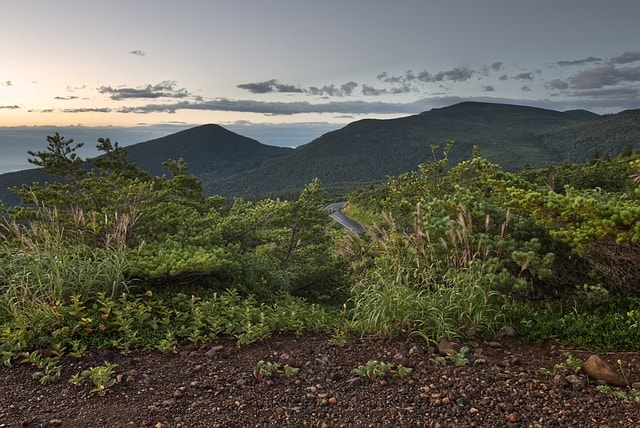
Boasting unmatched natural beauty, Tohoku’s landscapes vary from tranquil lakes to rough coastlines. Notable natural attractions such as Lake Towada, Oirase Gorge, and Mount Zao provide awe-inspiring views and experiences that leave a lasting impression.
Nestled within the Towada-Hachimantai National Park, Lake Towada is a double caldera lake renowned for its crystal-clear waters and scenic surroundings. Nearby, the Oirase Gorge features a stunning walking trail along the Oirase Stream, complete with waterfalls and vibrant autumn foliage.
Mount Zao, famous for its ‘snow monsters,’ offers a winter wonderland perfect for skiing and snowboarding.
Lake Towada
As a double caldera lake, Lake Towada stands out as one of Tohoku’s most intriguing natural wonders. Its unique geological formations offer breathtaking views that are perfect for kayaking and sightseeing cruises. The crystal-clear waters of Lake Towada reflect the surrounding mountains and forests, creating a serene and picturesque setting.
Visitors have the opportunity to traverse the multiple hiking trails surrounding the lake, offering breathtaking views of the caldera and lush forests. Whether you take a leisurely walk or embark on a more challenging hike, the natural beauty of Lake Towada is sure to leave a lasting impression.
For travelers originating from Tokyo, the JR Tohoku Shinkansen provides an efficient journey to Shin-Aomori Station, succeeded by a picturesque bus ride to Towada-ko.
Oirase Gorge
Noted for its 14-kilometer trail that follows the course of the Oirase Stream, Oirase Gorge is a natural marvel in the Tohoku region. The trail is adorned with lush greenery and clear waters, offering a tranquil escape into nature. As you walk along the path, you’ll encounter numerous waterfalls, each more enchanting than the last. Some of the notable waterfalls include:
Choshi Otaki, a 20-meter tall waterfall with a powerful flow
Kumoi Otaki, a 55-meter tall waterfall surrounded by moss-covered rocks
Ashura Otaki, a 30-meter tall waterfall that splits into two streams
Exploring Oirase Gorge is a must for nature lovers and hikers alike.
Autumn is an especially magical time to visit Oirase Gorge, as the foliage transforms into vibrant shades of red, orange, and yellow. The combination of cascading waterfalls and colorful leaves creates a breathtakingly beautiful landscape. Whether you’re a nature lover or simply looking for a peaceful retreat, Oirase Gorge is a must-visit destination.
Mount Zao and the Snow Monsters

Known for its unique ‘snow monsters’, Mount Zao is a celebrated ski resort in Tohoku. These surreal, otherworldly shapes are formed when trees are coated in layers of ice and snow due to strong winds and heavy snowfall. The result is a landscape that looks like it belongs in a fairy tale.
Beyond marveling at the snow monsters, visitors can partake in a range of winter sports at Mount Zao. The excellent skiing and snowboarding conditions make it a popular destination for winter enthusiasts. Some of the activities you can enjoy at Mount Zao include:
Skiing
Snowboarding
Snowshoeing
Sledding
Ice skating
The combination of stunning natural beauty and thrilling activities ensures that Mount Zao offers an unforgettable winter experience.
Cultural and Historical Sites
The abundant cultural and historical heritage of Tohoku manifests in its numerous temples, shrines, and samurai towns. These sites offer a glimpse into Japan’s feudal past and its enduring traditions. Exploring these locations allows visitors to connect with the region’s history and appreciate its architectural beauty.
Some of the most remarkable landmarks include ancient temples and shrines, like Chūson-ji and Yamadera. The former samurai stronghold of Kakunodate and the historic Aoba Castle in Sendai also provide fascinating insights into Tohoku’s past.
Temples and Shrines
Established in 850 by Ennin, the third head abbot of the Tendai sect, Chūson-ji Temple is a prominent historical landmark in Tohoku. The temple complex, constructed in the early 12th century by the first Ōshū Fujiwara lord Kiyohira, features the Konjikidō Golden Hall, which survived a devastating fire in 1337. The Golden Hall, completed in 1124, is entirely covered in gold leaf, both inside and out, making it a remarkable sight to behold.
Another temple worth visiting is Yamadera, also known as Risshaku-ji. Perched atop a mountain in Yamagata Prefecture, reaching Yamadera requires climbing a thousand steps. The journey is well worth it, as visitors are rewarded with stunning views and a sense of tranquility.
Kakunodate
Once a samurai stronghold in Akita Prefecture, Kakunodate is a well-preserved castle town, providing insights into Japan’s feudal period. Known for its traditional samurai architecture, Kakunodate is home to around 80 preserved samurai houses, each showcasing the lifestyle and culture of the samurai.
In spring, Kakunodate becomes a popular destination for cherry blossoms viewing. The town’s cherry trees create a picturesque backdrop for the historical samurai houses, attracting numerous visitors who come to admire the stunning display of blossoms.
Aoba Castle
Built by Date Masamune in 1601, Aoba Castle, also referred to as Sendai Castle, stands as a historical monument. This historical site played a pivotal role in the development of the region and is a testament to the architectural prowess of the era. Date Masamune, the feudal lord of the Date clan, was instrumental in beautifying the region, funding many projects, including the building of palaces, which left a lasting impact on Sendai’s cultural and historical landscape.
Today, visitors to Aoba Castle, a former castle town, can explore the ruins and enjoy panoramic views of Sendai City. The site also features a statue of Date Masamune, adding to its historical significance and charm.
Festivals and Traditions
Renowned for its lively festivals and traditions, Tohoku celebrates its abundant cultural heritage all year round. These festivals are a testament to the community’s spirit and offer visitors a chance to experience Tohoku’s cultural vibrancy firsthand.
Among Tohoku’s most notable and vibrant events are the Aomori Nebuta Festival, Sendai Tanabata Festival, and Chagu Chagu Umako Horse Festival. Each festival has its unique charm and significance, drawing visitors from all over Japan and beyond.
Aomori Nebuta Festival
Held each summer in Aomori City, the Aomori Nebuta Festival is one of Japan’s most renowned and colorful celebrations. This spectacular event features:
Large, illuminated floats that are often 9 meters wide, 7 meters deep, and 5 meters high
Floats known as Nebuta, which typically depict ancient warlords, historical characters, and kabuki actors
A dramatic and colorful display
Accompanying the floats are Haneto dancers, who bounce down the streets to the rhythm of Nebuta bayashi bands. The festival’s lively atmosphere is enhanced by the music and the energy of the participants. Visitors can also explore the Nebuta Museum to see vibrant lantern floats used in previous festivals.
Tanabata Festival
The Sendai Tanabata Festival is another standout event in Tohoku’s annual festivities. Celebrated in early August, this festival features thousands of colorful streamers that resemble brightly colored forests. These streamers are handcrafted by local shops, schools, and community groups using washi paper and bamboo, representing the threads of a loom.
The festival’s vibrant decorations transform the streets of Sendai into a visual spectacle, attracting visitors from all over Japan. The event also includes a fireworks display on the night before the festival begins, adding to the festive atmosphere and ensuring a memorable experience for all who attend.
Chagu Chagu Umako Horse Festival
Celebrated in Iwate Prefecture during the rice planting season, the Chagu Chagu Umako Horse Festival is a distinctive and colorful event. This festival features parades of colorfully decorated horses, adorned with elaborate decorations such as cranes for long life, kimonos for health, and nets for good harvests.
The festival’s name, “Chagu Chagu,” mimics the sound of the bells worn by the horses as they parade through the streets. The Chagu Chagu Umako Horse Festival is a celebration of agricultural traditions and a vibrant display of community spirit, offering a unique cultural experience for visitors.
Unique Culinary Experiences
As diverse and rich as its cultural heritage, Tohoku’s culinary scene is a gastronome’s delight. The region offers a variety of unique dining experiences that are sure to delight any food enthusiast. From the competitive spirit of the Wanko Soba eating challenge to the refined art of sake tasting, Tohoku’s culinary offerings are not to be missed.
Beyond these experiences, the region boasts delectable regional delicacies, like Akita’s Kiritanpo and Aomori’s acclaimed Fuji apples. Each dish and ingredient reflects the local culture and traditions, providing a gastronomic journey through Tohoku.
Wanko Soba
The Wanko Soba dining experience uniquely challenges participants to consume as many small bowls of soba noodles as possible. This challenge, popular in Iwate Prefecture, emphasizes hospitality and is accompanied by encouraging chants from the servers. The competition continues until the participant signals they are done by placing the lid back on their bowl.
One normal-sized bowl of soba is equivalent to fifteen small portions in the Wanko Soba challenge, and participants can enjoy a variety of condiments with their noodles. The record for the most Wanko Soba bowls consumed stands at an impressive 753 bowls, showcasing the fun and competitive nature of this unique culinary tradition.
Sake Tasting
Particularly at the distinguished Asabiraki Shuzo brewery, sake tasting in Tohoku is an enjoyable and sophisticated experience. This brewery offers guided tours that include sake tasting sessions, allowing visitors to sample a variety of sake ranging from sweet to dry. The quality of the sake produced here is exceptional, with Asabiraki Sake Brewery having won the Gold Medal 21 times since 1991.
During winter, visitors can observe the sake-making process in action, adding an educational element to the tasting experience. Whether you are a sake connoisseur or a novice, the diverse flavors and rich history of sake in Tohoku make for a delightful experience.
Regional Delicacies
The regional delicacies of Tohoku provide a flavorful insight into the local culture and culinary traditions. One such delicacy is Kiritanpo from Akita, which consists of rice sticks roasted to a golden yellow and cooked in a savory bonito broth. Akita’s Hinai Chicken, known for its firm texture, is a key ingredient in Kiritanpo Pot, adding to its rich flavor.
Aomori is renowned for its Fuji apples, which are commonly used in local desserts like apple tart and apple jelly. These apples are a testament to the region’s agricultural prowess and provide a sweet treat for visitors to enjoy. Savoring these regional delicacies is a wonderful way to experience the unique flavors of Tohoku.
Hot Springs and Onsen Towns
Hosting some of Japan’s most stunning and soothing hot springs, or onsens, Tohoku is a haven for relaxation. These natural hot springs offer a perfect way to unwind and rejuvenate after exploring the region’s many attractions. Ginzan Onsen, Nyuto Onsen, and Zao Onsen are among the most renowned onsen towns, each offering a distinctive experience.
From the nostalgic ambiance of Ginzan Onsen to the therapeutic waters of Nyuto Onsen and the winter sports haven of Zao Onsen, Tohoku’s onsen towns cater to a variety of preferences and offer a quintessential Japanese experience.
Ginzan Onsen

Known for its wooden architecture and retro vibe, Ginzan Onsen evokes a sense of nostalgia, reminiscent of Japan’s Taisho era. The town’s night view is particularly photogenic during winter when illuminated by gas street lamps, especially alongside the wooden hot spring inns that line the Ginzan River.
Visitors can enjoy hot spring footbaths known as ‘Warashiyu’ along the Ginzan River and even rent classical costumes from the Taisho period to enhance their onsen experience. The combination of historical charm and relaxing hot springs makes Ginzan Onsen a must-visit destination in Tohoku.
Nyuto Onsen
Situated in Akita Prefecture, Nyuto Onsen is a secluded hot spring village known for its healing waters. The village features over 10 different hot springs, each offering unique properties believed to have healing effects against various diseases. The serene and secluded setting of Nyuto Onsen provides a perfect escape from the hustle and bustle of everyday life.
Soaking in the hot springs of Nyuto Onsen offers:
A relaxing experience
A journey into the natural beauty and tranquility of Tohoku
The village’s rustic charm
Healing waters that make it an ideal destination for those seeking rejuvenation and peace.
Zao Onsen
Located in Yamagata Prefecture, Zao Onsen is a popular ski resort and hot spring destination. The acidic waters of Zao Onsen are reputed to have beneficial properties for the skin, making it a popular choice for those looking to combine winter sports with relaxation. The area offers excellent conditions for skiing and snowboarding, attracting winter sports enthusiasts from around the world.
After a day on the slopes, visitors can unwind in the rejuvenating hot springs, soaking in the therapeutic waters while enjoying the stunning mountain views. Zao Onsen perfectly blends adventure and relaxation, providing a comprehensive winter getaway in Tohoku.
Art and Museums
Just as diverse as its natural and cultural attractions, Tohoku’s art and museum scene is a spectacle in itself. The region hosts an array of museums, each dedicated to various art forms and historical artifacts. From contemporary art to traditional crafts, Tohoku offers a rich artistic experience for visitors.
Prominent institutions like the Towada Art Center and Akita Museum of Art display the region’s rich artistic legacy. These museums not only display remarkable collections but also integrate art with the natural environment, creating a unique and immersive experience.
Towada Art Center
The Towada Art Center is recognized for its seamless blend of art and the natural environment of Towada City. The center displays 41 commissioned pieces from 36 international artists, including works by Yoko Ono, Yayoi Kusama, and Yoshitomo Nara. Unique installations like Yayoi Kusama’s polka-dot pumpkin and a sculpture of a blue horse by Yoshitomo Nara are featured, creating a vibrant and eclectic atmosphere.
The Towada Art Center’s design includes various exhibition rooms connected by glass corridors, allowing visitors to feel a sense of intimacy with the artworks. This innovative approach to displaying art enhances the overall experience, making it a must-visit destination for art enthusiasts.
Akita Museum of Art
Located in Akita City, the Akita Museum of Art features:
A diverse collection of works by Fujita Tsuguharu, also known as Leonard Foujita
A 20-meter-long mural depicting life in Akita through the four seasons
Other significant works by Fujita
These exhibits offer a deep insight into the artist’s vision and the cultural heritage of Akita.
The museum’s architecture itself is a work of art, providing a beautiful setting for the exhibits. Visitors to the Akita Museum of Art can enjoy a comprehensive artistic experience, exploring both the historical and contemporary aspects of Akita’s cultural landscape.
Morioka Handi-Works Square
Morioka Handi-Works Square provides interactive experiences in traditional crafts, offering visitors a unique way to engage with Tohoku’s cultural heritage. Visitors can participate in workshops to make:
traditional Nanbu Senbei biscuits
Nambu ironware
dyeing techniques
pottery making
These interactive experiences provide a deeper understanding of the region’s craftsmanship and traditions. Morioka Handi-Works Square is perfect for those looking to take home a piece of Tohoku’s rich cultural heritage.
Getting Around Tohoku
With a plethora of transportation options available, navigating Tohoku is a breeze. Some of the most convenient and efficient ways to travel across the region include:
The JR Tohoku Shinkansen Line, which offers short travel times from Tokyo to major Tohoku cities such as Morioka and Sendai
Local trains and buses, which provide easy access to smaller towns and rural areas
Rental cars, which allow for more flexibility and exploration of the region at your own pace
These transportation options make Tohoku easily accessible for travelers.
For those looking to explore specific areas in more detail, various passes like the Aoimori Tourist Pass and the Tohoku Highway Bus Ticket offer unlimited travel on select routes. These passes provide flexibility and convenience, allowing visitors to explore Tohoku at their own pace.
Driving is another preferred method for traversing Tohoku, offering the liberty to discover remote areas and hidden gems. Car rentals are readily available, and the region’s well-maintained roads make for a pleasant driving experience.
Whether by train, bus, or car, getting around Tohoku is straightforward and hassle-free.
Where to Stay in Tohoku
With a plethora of options catering to various preferences and budgets, finding the ideal accommodation in Tohoku is a simple task. From luxury hotels to traditional ryokan and budget-friendly accommodations, Tohoku caters to all types of travelers.
Whether you desire the luxury of a high-end hotel, the cultural experience of a traditional ryokan, or the economic convenience of a business hotel or hostel, Tohoku caters to all. Each type of accommodation provides a unique experience, enhancing your stay in this beautiful region.
Luxury Accommodations
For those in search of luxury, both the Shizukuishi Prince Hotel and Prince Hotel Towada make excellent choices. Located in stunning mountain and lakeside settings, these hotels offer top-notch amenities, including beautiful onsen, excellent dining options, and seasonal activities such as skiing and golfing.
Guests can enjoy the serene beauty of their surroundings while indulging in the luxurious comforts provided by these hotels. Whether you’re looking for a relaxing retreat or an active vacation, luxury accommodations in Tohoku provide the perfect blend of comfort and adventure.
Traditional Ryokan
A stay at a traditional ryokan immerses guests in an authentic Japanese experience, steeped in the region’s culture and customs. These inns often feature tatami mat rooms, futon bedding, and communal hot spring baths, providing a unique and traditional lodging experience.
Many ryokan also offer kaiseki meals, which are multi-course dinners showcasing seasonal and local ingredients. The combination of cultural immersion, relaxing onsen, and exquisite dining makes staying at a ryokan a memorable part of any trip to Tohoku.
Budget-Friendly Options
Tohoku caters to budget-conscious travelers with an array of economical accommodation options, including business hotels, hostels, guesthouses, and capsule hotels. Business hotels provide basic amenities and are conveniently located near transport hubs, making them a popular choice for budget travelers.
Hostels and guesthouses are perfect for backpackers and those looking for social interaction. These accommodations often come with shared facilities and communal spaces, providing an economical and sociable lodging experience.
Capsule hotels offer a unique and highly efficient lodging option, providing a place to sleep and basic facilities at a very low cost.
Learn more, visit Where to stay in Tohoku for each attaction.
Summary
In summary, Tohoku is a region rich in natural beauty, cultural heritage, and unique experiences. From exploring the diverse prefectures and their attractions to indulging in the region’s culinary delights and relaxing in its hot springs, Tohoku offers something for every traveler. The vibrant festivals and traditions, along with the diverse art and museums, further enhance the cultural tapestry of the region.
As you plan your visit to Tohoku, consider the various accommodation options and transportation methods to make the most of your journey. Whether you’re seeking adventure, relaxation, or cultural immersion, Tohoku promises an unforgettable experience. Embark on this journey and discover the hidden treasures of northern Japan.
Frequently Asked Questions
What are the must-visit natural attractions in Tohoku?** **?
You must visit Lake Towada, Oirase Gorge, and Mount Zao in Tohoku for stunning landscapes and unique experiences such as kayaking and witnessing the snow monsters. These natural attractions offer a memorable adventure.
What are some famous festivals in Tohoku?** **?
Tohoku is famous for its vibrant festivals such as the Aomori Nebuta Festival, Sendai Tanabata Festival, and Chagu Chagu Umako Horse Festival, each offering a unique cultural experience and attracting visitors from all over Japan and beyond.
How can I get around Tohoku?** **?
You can easily travel around Tohoku using the JR Tohoku Shinkansen Line, which connects major cities like Morioka and Sendai. Additionally, there are various passes, bus routes, and driving options available for exploring specific areas.
What are some unique culinary experiences in Tohoku?** **?
In Tohoku, you can participate in the Wanko Soba eating competition, enjoy sake tasting at the Asabiraki Shuzo brewery, and indulge in regional delicacies like Kiritanpo and Aomori’s Fuji apples. These experiences offer a delightful exploration of the local cuisine.
Where can I stay in Tohoku?** **?
Tohoku offers a variety of accommodation options, including luxury hotels, traditional ryokan, and budget-friendly choices such as business hotels and hostels, each catering to different preferences and budgets.
